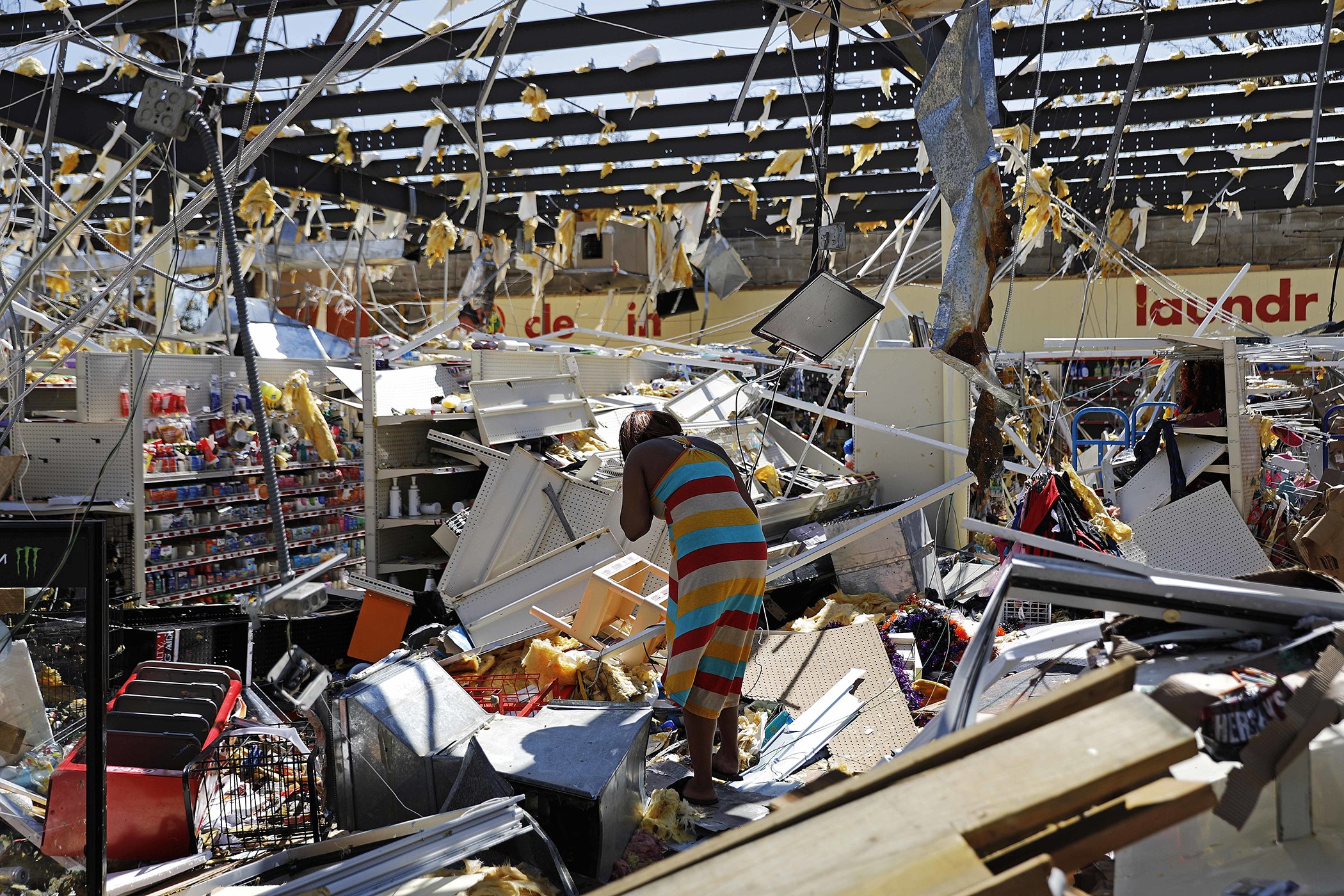Sidewalks mashed up, electricity towers snapped in half, palm trees fronds-down on pavement, roads submerged in water — these are some of the scenes of Hurricane Michael’s destruction along the Florida Panhandle.
When Hurricane Michael made landfall on Oct. 10, it was the third strongest hurricane in US history and the strongest storm that the Gulf Coast had ever seen, Business Insider reports.
The storm also arrived the same week as the United Nations’ multi-year analysis on climate change, which, among other things, argues that hurricanes will become more intense as the world warms.
Take Action: Take the Resilient Response Pledge and Commit to Change the Way You Give after a Natural Disaster
Hurricane Michael is an early case study of that emerging reality, according to the Columbia Journalism Review.
As Hurricane Michael developed in the Gulf of Mexico, unusual conditions allowed it to grow to a gargantuan size.
 A woman walks through a damaged store in the aftermath of Hurricane Michael in Springfield, Fla., Oct. 11, 2018.
A woman walks through a damaged store in the aftermath of Hurricane Michael in Springfield, Fla., Oct. 11, 2018.
A woman walks through a damaged store in the aftermath of Hurricane Michael in Springfield, Fla., Oct. 11, 2018.
Waters in the region were 4 to 7 degrees Fahrenheit warmer than usual as Michael approached, and waters by cities like Pensacola were 8 degrees warmer than normal.
Even a single degree higher than the historical average is a large fluctuation and can lead to dangerous conditions. For example, coral reefs around the world are dying en masse because of periods when water is only a degree or two above normal.
Read More: Hurricane Florence and the Rise of Storms Fueled by Climate Change
When it comes to hurricanes, warmer waters contribute more heat and evaporating moisture to the storms, allowing them to grow in size and speed.
Rising sea levels are another factor making hurricanes more destructive. As hurricanes approach land, the higher sea level provides more water for the storm to throw around, creating more powerful and dangerous storm surges.
“Even if there weren’t changes in the hurricane itself, just because you have sea-level rise you end up having more flooding,” Thomas R. Knutson, a climate scientist with the National Oceanic and Atmospheric Administration, told the New York Times.
There’s a lot of damage in Panama City, FL. #HurricaneMichaelpic.twitter.com/c3Ik4R3ZRs
— Jeff Gammons (@StormVisuals) October 10, 2018
In September, Hurricane Florence intensified at a rate that could signal a new era of mega hurricanes. And last year, Hurricanes Maria, Irma, and Harvey all bore some mark of climate change.
“Hurricane Michael isn’t a truly ‘natural disaster,’” John D. Sutter, a CNN reporter, wrote. “Neither was Harvey in Houston. Nor Maria in Puerto Rico. Yet we continue to use that term. Doing so—especially in the era of climate change—is misleading, if not dangerous.”
Read More: 5 Ways You Can Help the Victims of Hurricane Florence
In the years ahead, powerful storms like Michael and Florence could become the norm. For coastal communities, and especially those living in poverty, these storms pose an existential threat.
In addition to investing in relief efforts, resilience plans, and coastal infrastructure, countries can mitigate the risk of these storms by reducing their greenhouse gas emissions.